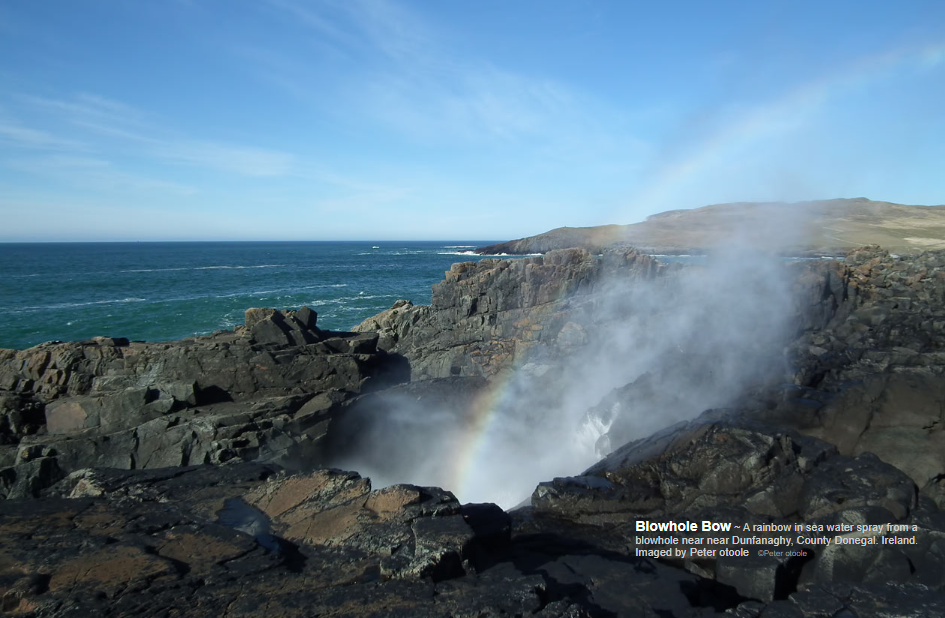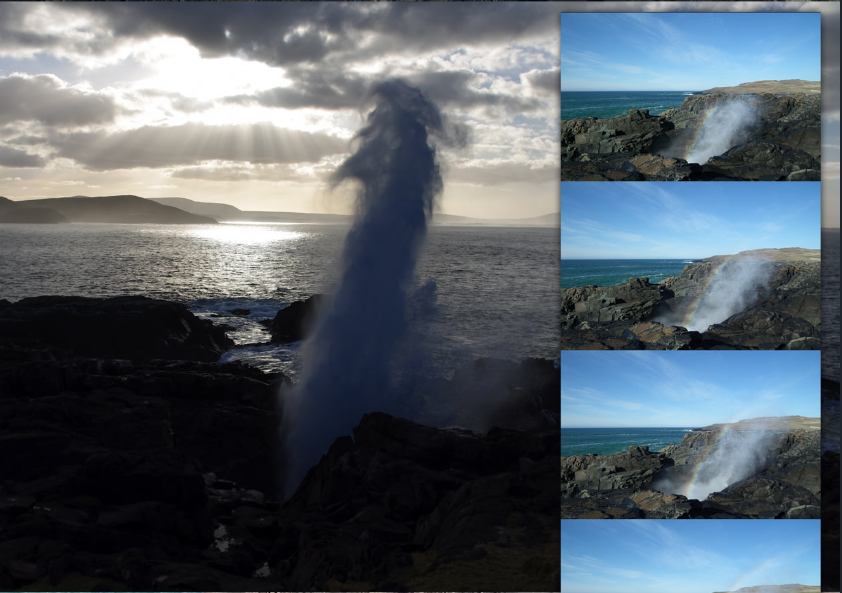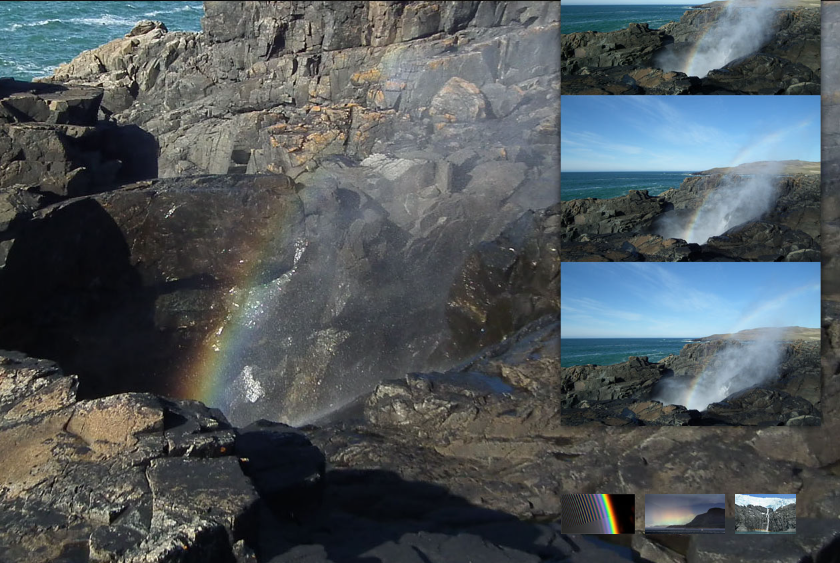OPOD - Blowhole Bow
OPOD - Blowhole Bow: A Spectacular Display of Nature's Colors
Nature never ceases to amaze us with its extraordinary displays of beauty and wonder. One such breathtaking phenomenon is the Blowhole Bow, a mesmerizing rainbow formed by sea water spray from a blowhole. Located near Dunfanaghy in County Donegal, Ireland, this captivating optical phenomenon has captured the hearts of both locals and visitors alike. Imaged by the talented photographer Peter O'Toole, this ethereal spectacle showcases the vibrant colors of nature in a truly unique way.
Understanding the Blowhole Bow
A blowhole is a natural formation where water is forcefully expelled through a small opening in the rocks, creating a powerful spray. When sunlight interacts with this fine mist, it undergoes a process known as refraction. This bending of light causes the different colors of the spectrum to separate, forming a brilliant display of colors that we perceive as a rainbow.
The Science Behind the Colors
To fully appreciate the beauty of the Blowhole Bow, it's important to understand the science behind its vibrant hues. The colors of the rainbow are a result of the dispersion of light, where sunlight is broken down into its individual wavelengths. Each color corresponds to a specific wavelength, with red having the longest wavelength and violet having the shortest.
As sunlight passes through water droplets in the air, it undergoes refraction, causing the light to bend. This bending effect separates the different colors and creates the iconic arc shape of a rainbow. The innermost part of the arc appears red, while the outermost part appears violet, with all the other colors in between.
The Magic of Water Droplets
The formation of a Blowhole Bow requires not only a blowhole but also a fine mist of water droplets. These droplets act as tiny prisms, refracting and dispersing sunlight to create the rainbow's vivid colors. The size and shape of the water droplets play a crucial role in determining the intensity and clarity of the rainbow. Smaller droplets tend to produce brighter and more vibrant colors, while larger droplets may result in a fainter or less defined rainbow.
The Influence of Viewing Angle
The angle at which we view the Blowhole Bow also affects its appearance. When the sun is low on the horizon, the rainbow appears higher in the sky. As the sun rises higher, the rainbow gradually lowers until it eventually disappears. This phenomenon occurs because the position of the sun determines the angle at which light enters and exits the water droplets, thereby altering the angle at which we perceive the rainbow.
Additional Optical Effects
In addition to the primary rainbow formed by the blowhole spray, other optical phenomena may accompany it, further enhancing its visual impact. These include:
- Supernumerary Rainbows: Occasionally, additional faint rainbows can be seen on the inner edge of the main rainbow. These secondary rainbows are caused by interference patterns between light waves and result in bands of pastel colors.
- Reflections and Double Rainbows: If the blowhole is located near a body of water, such as the sea, reflections of the primary rainbow can appear on its surface. In certain conditions, a double rainbow may even form, creating a truly magical sight.
Capturing the Blowhole Bow
Photographing the Blowhole Bow requires skill and patience. To capture this awe-inspiring phenomenon, photographers must consider various factors, such as lighting conditions, composition, and timing. The interplay between sunlight, water droplets, and the surrounding environment adds an extra layer of complexity to the process. However, when all these elements align, the result is a breathtaking image that encapsulates the beauty of nature's colors.
Embracing Nature's Splendor
The Blowhole Bow serves as a reminder of the incredible beauty that surrounds us in the natural world. Its vibrant colors and ephemeral nature remind us to pause and appreciate the wonders of our planet. Whether we witness it firsthand or through captivating photographs, the Blowhole Bow is a testament to the intricate workings of light, water, and atmosphere that create such extraordinary visual phenomena.
Conclusion
The Blowhole Bow is a magnificent display of nature's colors, captivating our imagination and reminding us of the enchanting beauty that exists in our world. This optical phenomenon, formed by sea water spray from a blowhole, showcases the magic of light and water droplets. From the science behind its vibrant hues to the various optical effects that can accompany it, the Blowhole Bow is a testament to the intricacies of nature. So, the next time you find yourself near a blowhole, keep your eyes peeled for this awe-inspiring spectacle and embrace the wonder that lies within it.

Blowhole Bow ~ A rainbow in sea water spray from a blowhole near near Dunfanaghy, County Donegal. Ireland. Imaged by Peter otoole ©Peter otoole



Note: this article has been automatically converted from the old site and may not appear as intended. You can find the original article here.
Reference Atmospheric Optics
If you use any of the definitions, information, or data presented on Atmospheric Optics, please copy the link or reference below to properly credit us as the reference source. Thank you!
-
<a href="https://atoptics.co.uk/blog/opod-blowhole-bow/">OPOD - Blowhole Bow</a>
-
"OPOD - Blowhole Bow". Atmospheric Optics. Accessed on November 26, 2024. https://atoptics.co.uk/blog/opod-blowhole-bow/.
-
"OPOD - Blowhole Bow". Atmospheric Optics, https://atoptics.co.uk/blog/opod-blowhole-bow/. Accessed 26 November, 2024
-
OPOD - Blowhole Bow. Atmospheric Optics. Retrieved from https://atoptics.co.uk/blog/opod-blowhole-bow/.